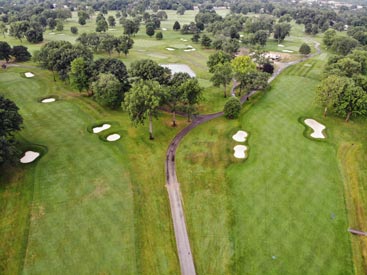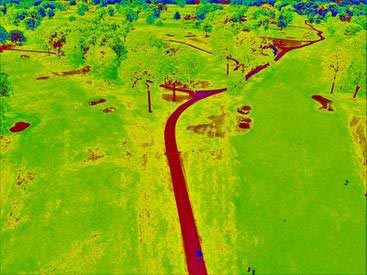Editor’s note: The following article was supplied by Bayer. All product claims, research cited and other information is directly from the company.
Greens: High expectations, high stress
Putting greens are held to the highest quality and performance standards on the course and are subjected to rigorous management regimens. From extremely low heights of cut to repeated rolling, superintendents go to great lengths to optimize ball roll trueness, green speed and the golfer experience.
Low mowing heights (≤0.125 inch) equate to less leaf area per plant, which has implications for carbon metabolism, cellular development and cellular maintenance. When plants have less surface area available to capture sunlight and absorb critical nutrients aboveground, their ability to thrive under challenging conditions can become compromised.
Turf health is a crucial factor in a plant’s ability to withstand disease and abiotic factors such as summer stress (heat and drought), winter stress (chilling, freezing, green-up), and ancillary
stresses such as traffic, compaction, abrasion and shade.
Fairways: Significant problems magnified by scale
Fairways represent the largest area of in-play acreage on a golf course and serve as a primary factor influencing a course’s aesthetic appeal. Although fairways are subject to many of the same stresses as putting greens, they can typically better tolerate or more easily mask certain stresses by virtue of their higher mowing heights and deeper rooting. Concurrently, fairways tend to be scrutinized to a lesser degree on a foot-by-foot basis, and input events by the turf manager are less frequent.


The first photo shows the improvement in fairway turf health and uniformity beyond disease control of a Stressgard program (right side of photo) vs. a normal fungicide program (left side). This shot was captured in mid-July during a significant drought period. Applications began in early May. This same photo was post-processed (second photo) to highlight contrast in fairway turf uniformity and quality by examining the hue angle property of the pixels. That data was converted to a scale of pseudo colors
(red, green, yellow, etc.) to highlight the visible distinctions in the original format. Photos courtesy of Bayer
When a significant problem does occur, however, fairways’ sheer scale can warrant significant resources in the form of water, labor, fertility, plant protection products and more. With that in mind, it’s important to implement preventive or early-curative techniques that are both highly effective and long-lasting.
Leveraging fungicide applications to minimize turf stress
Turf health-promoting products are an excellent way to protect the playing surface from key diseases and to strengthen a plant’s natural ability to withstand stresses ranging from temperature fluctuations to drought, poor light conditions, traffic and more.
Stressgard, which includes seven products spanning five different FRAC codes, is uniquely formulated to combat both biotic and abiotic stresses, delivering improved performance in the following key areas:
- Drought tolerance and recovery
- Traffic tolerance and recovery
- Shade issues and light quality
- Spring green-up and stand re-establishment
- Heat stress and turf safety

On a golf course, eliminating stressors such as heat, shade, traffic and even height of cut isn’t realistic. Stressgard was specifically developed to increase turf’s tolerance to these kinds of conditions. Offering immediate and long-lasting turf health benefits, Stressgard promotes a stronger, more resilient turf plant that can deliver consistently exceptional performance — even in conditions you can’t predict.
For additional insights on leveraging Stressgard on your turf, visit es.bayer.us/stressgard.
Patrick Burgess, Ph.D., is a field development scientist for Bayer.